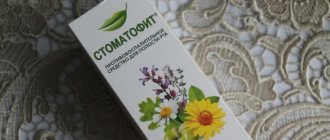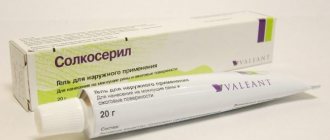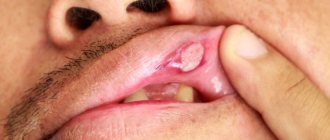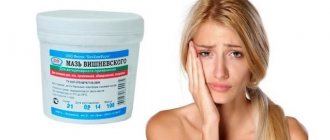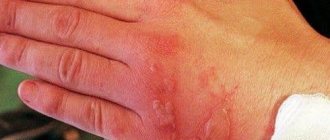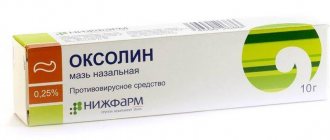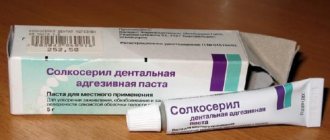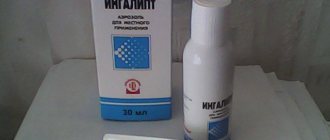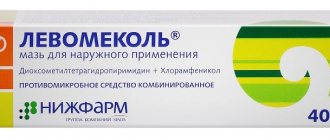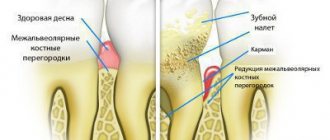Definition
The drug “Methyluracil” used for stomatitis is a wide-spectrum drug that promotes cellular regeneration, accelerates the metabolic process, relieves swelling and inflammation.
The medicine is used for rapid healing of wounds and scars. In addition, the drug has a beneficial effect on the human immune system and is used to treat bacterial and viral diseases. The medicine is prescribed both for the treatment of certain diseases and for prevention purposes. The medicine contains the following components:
- the active substance is methyluracil;
- auxiliary components of the drug are paraffin, potato starch, macrogol and alcohol.
Analogs
If it is impossible to purchase Methyluracil, it is worth considering analogues. Since the drug has become very popular, today there are many drugs with a similar effect:
- Vulnostimulin is made on the basis of an aqueous extract of wheat germ. Performs the process of regeneration and healing. This is the most common remedy that is often replaced with Methyluracil. Has the same usage pattern.
- Aekol is a liquid oily product that contains vitamins A, B, E and K3. Helps optimize metabolism and heal purulent wounds.
- Acerbine contains salicylic and benzoic acid. It has an antiseptic, analgesic and wound-healing effect. Can be used even for severe wounds.
- Miramistin ointment is an antiseptic that is quite active against gram-negative and gram-positive bacteria. It is also used for fungal diseases of nails and skin.
- Levomekol has similar effects on wounds, but is easily tolerated by the body. Despite its effectiveness, cases of allergic reactions are often reported today.
Video about doctor's reviews about the drug Methyluracil:
What is Methyluracil ointment used for?
Since the main property of the ointment is wound healing, it is used for skin lesions - abrasions, wounds, cracks, burns, cuts and for dermatological problems - eczema, lichen, trophic ulcers, skin erosion, neurodermatitis.
Off-label, Methyluracil ointment is often used in home cosmetology as a means to combat wrinkles.
The main components included in the composition penetrate into the deep layers of the skin and have a nourishing effect and provide a deep level of hydration at the cellular level. Due to this, the process of regeneration (renewal) of epidermal cells is accelerated, due to which the skin becomes healthier.
We also note that due to the effect of dioxomethyltetrahydropyrimidine, the production of natural collagen and elastin is activated, which increases turgor.
Therefore, as a result of using the ointment for a long time (1-2 months), the number of facial wrinkles decreases and the aging process significantly slows down. This is an effective alternative to expensive drugs and procedures.
The purpose of a cream with an active substance is epithelization, immunomodulation, anti-inflammatory and anabolic process, wound healing, photo-protection, reparation. The product is used for the following indications:
- wounds;
- burns;
- dermatitis and dermatoses;
- bedsores;
- diaper rash;
- abscesses;
- trophic ulcers;
- boils;
- stomatitis;
- haemorrhoids;
- thrush;
- acne caused by subcutaneous mites.
In gynecology
The wide spectrum of action of Methyluracil ointment allows its use in gynecology. It is used as a wound-healing drug after childbirth, accelerating the healing of tears and sutures. Correct use of the ointment involves applying it to the prepared perineal area. First, wash it with an antibacterial agent, soap, antiseptic, wipe with a soft towel, and dry. Apply the substance to sterile gauze, apply to the damaged areas, and put on underwear.
The procedure can be repeated up to four times a day at intervals of six hours. In addition to the wound-healing effect, Methyluracil cream anesthetizes and accelerates the healing of sutures and tears. Some cases involve intravaginal administration of medication up to several times a day to treat inflammatory processes.
In cosmetology
Methyluracil is considered a proven means of getting rid of age-related signs, wrinkles and reducing their intensity. It effectively copes with the first signs of aging, stimulates cellular regeneration, intensively affects the tissues of the skin, raising their immunity with accelerated metabolism and synthesis processes. Due to its local action, Methyluracil smooths out deep wrinkles and folds and reduces their number.
For effective results, cosmetologists advise applying the drug to cleansed facial skin in the morning and in the evening as the final third stage after makeup removal and toning. The drug has a dense texture, but is perfectly absorbed without traces of oil. You can use the product as a base for makeup for a week, then take a break for seven days, and repeat again.
Among the advantages of using Methyluracil ointment in cosmetology, safety, high efficiency, availability, and inexpensive price are noted. When using, read the instructions to take into account possible medical contraindications and eliminate the risk of allergic reactions. Consult your physician before use.
In dentistry
Methyluracil ointment is actively used in therapeutic dentistry as a wound-healing or anti-inflammatory agent that accelerates the regeneration of affected tissues. It helps to cope with aphthous stomatitis in a child or adult. It should be remembered that the cream is not used independently - only in combination with antibacterial agents and the main treatment. You can use it twice or thrice a day 20 minutes before meals and at night.
Review of the 10 most popular ointments for stomatitis
For the ointment to be effective, you need to correctly determine the type of inflammation of the mucous membrane. In addition, you need to solve internal problems of the body, if any. But the following remedies have proven to work best in the treatment of stomatitis:
Acyclovir
Inexpensive antiherpes drug. The main character of the ointment is an analogue of the DNA component (deoxyguanosine). A complex compound with a difficult name easily penetrates the herpes virus (into its DNA) and carries out destructive work in its internal structure. Thus, acyclovir inhibits herpes and prevents it from acting on the oral mucosa.
The ointment is best applied as an application. We apply it to a cotton swab and treat not only the inflamed mucous membrane, but also its healthy areas. It is better not to do this with your hands because you can transfer herpes to healthy skin. We use it five times a day (or once every 4 hours). The duration of therapy is from weeks to ten days. Before treatment, rinse the mucous membrane with soda or a strong infusion of chamomile.
The advantage is that a small tube will last for a long time and you can treat herpes not only in the mouth. Analogs of the drug are acigerpin, zovirax and vivorax, gervircax, and also herparax.
Oxolinic ointment
Chemists call oxoline naphthalene-1,2,3,4-tetron. It copes with many viruses, including those that contribute to inflammation in the oral cavity. Suitable for children and as a prophylactic. Use two to four times a day only on inflamed areas of the mucosa. For stomatitis, a concentration of 0.25 is needed.
There are no contraindications, but some side effects are possible, for example, a slight burning sensation or blue discoloration of the mucous membrane. Three percent oxolinka is suitable even for babies under one year old. Not dangerous for pregnant women. It also helps with herpes stomatitis, so it is quite a universal remedy. Cost - from 20 rubles to 120.
Nystatin
A product that kills Candida fungi. The active ingredient of this ointment is an antifungal polyene antibiotic. The molecules of the product easily integrate into the membrane of the fungus and thereby destroy it. By the way, there is almost no addiction to nystatin. The ointment is not recommended for expectant mothers, as well as for liver problems, ulcers and pancreatitis.
Overdose should not be allowed. Nystatin is applied exclusively to the affected mucosa and in tiny doses. For inflammation of the oral mucosa, a five percent ointment is needed. First, it is applied to gauze or cotton wool, then to the mucous membrane affected by the fungus. The procedure is carried out a couple of times a day, the shortest course is three days. The price of the product is only 35 rubles.
Methyluracil
Good for children. Improves the regeneration of any tissue, including the oral mucosa. Methyluracil also copes with inflammation and relieves pain. It is most effective for ulcerative and aphthous stomatitis, as well as for infectious bacterial stomatitis.
Methyluracil is prescribed in combination with other drugs. It should not be used without a doctor's prescription. Contraindicated in patients with cancer. Side effects include minor allergic reactions, as well as dizziness and pain in the area of damaged mucosa. If any occur, you need to rinse your mouth with furatsilin. Use three times a day, a third of an hour before meals, and also before bedtime.
Holisal
Purely a dental product. Its active ingredients are choline salicylate and cetalkonium chloride. It can be called a universal ointment against all types of stomatitis. It not only copes with inflammation, but also relieves pain and also reduces fever.
It works within a couple of minutes after application. Used two to three times a day, depending on the type of stomatitis and stage. For children over one year old, a strip of product half a centimeter long is enough, for adults - a centimeter long. Rub Cholisal well into sore mucous membranes.
Solcoseryl
It is close in action to methyluracil, but can only be used externally. It is a dialysate from the blood of cows. An excellent antiseptic and healing agent that stimulates the development of new cells. In addition, solcoseryl copes with inflammation and relieves pain. Forming a film, it stays on the mucous membrane for several hours, which is enough for healing and relieving inflammation.
Before applying, be sure to treat the oral mucosa with an antiseptic. Apply solcoseryl only after it has completely dried. Use this way a couple of times a day. It is available in the form of ointments and gels, but for stomatitis, the ointment will be much more convenient.
The cost of the ointment is up to 180 rubles. per tube with a volume of 20 grams.
Metrogyl denta
Dental version of metonidazole. This is an antimicrobial and antiprotozoal agent that kills a large number of microorganisms, including those that cause stomatitis. Most often combined with antibiotics. The second active ingredient of metrogil is chlorhexidine. It is a disinfectant and an excellent antiseptic.
The ointment has a very low concentration, therefore it is almost not dangerous and is acceptable for expectant mothers, as well as for children over six years old. It adheres well to the mucous membrane, so at the same time it heals it. Apply with cotton swabs or a perfectly clean finger (treat with antiseptic). Application twice half an hour before meals is sufficient. It is not recommended to drink water after application. Metrogyl Denta should be applied for stomatitis from a week to ten days. Also used for gingivitis and periodontitis. Cools well.
Kamistad
There are two main “fighters” here - lidocaine hydrochloride and chamomile extract. Relieves pain, has an antimicrobial effect, as well as anti-inflammatory. Not applicable to children under twelve years of age.
Apply a half-centimeter strip to the affected mucous membrane and rub in lightly. The course is not limited in any way; we apply Kamistad three times a day.
Viru-merz-Serol
The main substance is tromantadine. A remedy to combat herpes. Neutralizes herpes itching, as well as pain and burning, shortens the duration of herpes. Use from three times a day to five. The course is five days. Stops after bubbles appear.
Tebrofen ointment
Antiviral, most effective in the fight against herpes. To treat stomatitis, a concentration of 2% is needed. The course is one week. Apply to areas with stomatitis three times a day. Among the side effects, allergic dermatitis is sometimes observed.
What does ointment with Methyluracil help with?
Methyluracil cream boasts a wide pharmacological spectrum of use, which helps with hemorrhoids, thrush, ruptures and sutures after childbirth. The advantages of using the drug are its low cost, availability in any pharmacy and safety for children, adults, pregnant and lactating women. It is worth knowing how to use the medicine correctly to obtain a pronounced effect.
For hemorrhoids
Methyluracil is considered one of the most effective remedies for hemorrhoids, which actively stimulates the regeneration of damaged areas, removes inflammation and strengthens the immune system. An ointment with an active substance fights hemorrhoidal cones, eliminates the inflammatory process in the rectal area and heals cracks in the anus.
According to studies, external use of Methyluracil ointment does not contribute to the penetration of the active component into the blood, which reduces side effects to zero. Rarely, patients may experience burning and itching. The cream helps eliminate uncomplicated hemorrhoids without bleeding or severe pain in a few days. It neutralizes cracks caused by friction.
For acne
Cosmetologists prescribe Methyluracil for pimples and acne caused by subcutaneous mites and staphylococcus or hormonal problems. It is better to use ointment with miramistin for treatment, which has a strong disinfectant and antibacterial effect.
The cream is applied to cleansed skin twice a day and can be used in combination with antibiotics and chemotherapy, enhancing their effect. If the acne has already healed, then Methyluracil will help eliminate scars and scars remaining on the face. It even copes with old elements, smoothes out long-term scars and skin lesions.
During pregnancy
According to the instructions for use, Methyluracil is a safe remedy during pregnancy because it effectively accelerates the regeneration of maternal tissue without affecting the fetus. While carrying a baby, the medication is used to treat wounds and burns in order to restore tissue. After childbirth during breastfeeding and lactation, the cream is applied to seams, microcracks and tears for rapid healing.
The ointment can be used externally or intravaginally. In the first case, the cream is applied to the skin and mucous membranes, in the second - inside the vagina (you must first wash yourself by douching with a weak solution of potassium permanganate). You can apply the ointment inside with your finger or swab, up to three times a day. The procedure must be repeated until the mucous membrane is completely healed (4-7 days).
For thrush
Methyluracil for thrush, administered intravaginally, is very popular among women. It accelerates cell restoration, heals affected areas, stimulates mucosal protection, reduces swelling and burning. The active substance of the drug stimulates the process of growth in the number of red and white blood cells.
Types and categories of ointments for stomatitis
A variety of active ingredients will eliminate any cause of inflammation of the mucous membrane. Ointments against stomatitis are divided into the following types:
- Universal. They relieve inflammation and are needed both for ulcerative stomatitis and for aphthous and catarrhal stomatitis;
- antifungal. For the treatment of candidal stomatitis;
- antiviral. Needed for the treatment of herpetic stomatitis;
- antibacterial, used for aphthous or traumatic stomatitis.
It is important to know! None of the ointments will help if the inflammation of the mucous membrane is caused by allergies. It is not the infection that is to blame here, but internal disorders.
Stomatitis ointment for children
Not every ointment is suitable for a child. Therefore, when fighting inflammation of the mucous membranes in children, you must always consult a pediatric dentist and study the instructions for any product: the dosage can vary greatly.
Price of Methyluracil ointment
The drug is available in the following forms:
- Pills. Each tablet contains 500 mg of active substance. Packaged in 50 pieces in each package.
- Ointment. One gram of ointment contains 100 g of active ingredient. The ointment is in aluminum tubes of 25 g each. The ointment is intended for external use.
- Candles. The drug is available in the form of suppositories intended for rectal use. Each suppository contains 0.5 g of active substance.
Each package contains 10 candles.
| Manufacturer | Price on the Internet, rubles | Price at the pharmacy, rubles |
| Nizhpharm | 55 | 65 |
| Biosynthesis | 80 | 84 |
| Tula factory | 26 | 30 |
The cost of Methyluracil ointment is not high compared to drugs with similar effects.
The price depends on the point of sale. You can purchase the product at a pharmacy or online store, where, as a rule, the cost is slightly lower (due to the lack of expenses for renting premises).
A tube of ointment costs from 50 rubles.
Methyluracil ointment is available in tin tubes or glass containers. The average price in Russia fluctuates between 35-40 rubles.
Methyluracil ointment - instructions for use for children
The effectiveness of methyluracil cream for children has not yet been established, but pediatricians prescribe it to treat children with wounds, burns and other damage to the skin. Due to the active substance, the drug has the property of improving tissue nutrition and accelerating the growth of new epithelial cells. Anti-inflammatory and immunomodulatory effects are used in the treatment of burns, long-healing wounds, diaper rash and inflammation. Children are recommended to apply Methyluracil up to three times a day for no longer than 2-3 weeks.
Application area
Methyluracil activates regenerative processes and produces the body's natural defense response. Since it is quite common, many people know what this medicine is used for: as a preventative and therapeutic drug.
In gynecology
Used in gynecology, the indication for use is thrush. The ointment is applied to the affected area and has a healing effect. It is used for traumatic and pathological processes.
The drug is recommended for preventive purposes - to prevent skin tears in the perineum and vaginal mucosa during childbirth. In order for the medicine to work, it must be used for 10 days before birth by applying the ointment to a tampon 2 times a day. Recommended time: morning and evening. As a result, the risk of rupture is reduced by up to 70%.
We recommend reading: How to take Fluconazole for thrush
In dentistry
The ointment is also actively used in dentistry to combat diseases and other pathological processes that appear against the background of infectious infection. It is often used for stomatitis, as it has an anti-inflammatory and healing effect on ulcers and wounds.
In dentistry, it reduces the risk of developing oral diseases and stops their development in the initial stages. It is applied to the tongue, palate, gums and other areas.
In cosmetology
Methyluracil is used in cosmetology for skin diseases and as a corrective tool.
Successfully copes with infectious processes and various inflammations. In addition, many people use it to eliminate acne. The drug is recommended for use against burns, including sunburn, as well as for getting rid of scars. Has the fastest possible effect.
In proctology
In proctology, it is used more often in the form of suppositories, but in the absence of such, ointment applied to a tampon is used. Experts recommend the medicine for colitis, colon erosion, and hemorrhoids. In addition, indications for use in this area of medicine are ulcerative and traumatic lesions of the anus and intestinal mucosa.
Applying ointment to the affected area promotes speedy recovery and healing. It is used for both adults and children, but the dosage in these cases will be slightly different.
Use in gynecology
Methyluracil should not be used if there is a significant amount of granulation in the wounds. In other cases, ointment or suppositories have no contraindications. Synthetic medicine in the form of tablets is contraindicated for those who are prone to allergic reactions to medications or suffer from the following diseases:
- hemoblastosis;
- bone marrow cancer;
- leukemia;
- lymphogranulomatosis.
The drug is well tolerated, provided that the patient is not intolerant to one of the components of the drug. But if the rules for taking the medication are not followed, the dosage is exceeded, or the drug is used for a long time, allergic reactions such as:
- headache;
- heartburn;
- rash;
- dizziness;
- feeling of tightness in the wound;
- itching;
- burning.
"Methyluracil" in the form of an ointment is available without a prescription; it can be used without consulting a doctor to quickly heal wounds. The drug can be used to prevent stomatitis, and be used on the mucous membrane, even when there are no wounds. When using tablets or suppositories, a conversation with a doctor is necessary. To avoid the recurrence of stomatitis, you need to take more care of your health and strengthen your immune system.
If a patient has stomatitis, the cause of which is bacteria, then doctors may prescribe the drug “Methyluracil” for its treatment. For the treatment of aphthous or traumatic stomatitis (it is these types of illness that occur under the influence of bacteria), an ointment is used that promotes rapid tissue restoration, relieves inflammation and minimizes pain.
The drug must be used as recommended by a doctor and used exclusively in combination with other medications. When treating stomatitis, the ointment should be applied in the morning, at lunchtime and in the evening half an hour before meals and before bedtime. It is necessary to continue the therapeutic course from two weeks to a month, depending on the severity of the disease and the individual characteristics of the body.
For stomatitis, the doctor may prescribe tablets. Adults take 500 mg of medication orally 4 times a day. In children under three years of age, the medication is contraindicated, and over three years of age and up to eight years, children can drink 250 g three times a day. Adolescents from eight years of age are allowed to increase the dosage to 500 mg three times a day. The tablets should be taken during or after meals.
The use of Methyluracil helps tighten the vaginal mucous membranes and scars on the perineum formed as a result of gusts during childbirth.
Rules of application:
- You must shower with soap or intimate hygiene products.
- Treat the seams with hydrogen peroxide or potassium permanganate.
- Dry the intimate area with a napkin.
- Apply the ointment to the stitches using a sterile bandage.
- Wear underwear only from natural materials, use a pad without mesh.
- The bandage with ointment needs to be changed every 2-3 hours, depending on the amount of postpartum discharge.
To restore the vaginal mucosa, treat microcracks and to prevent the development of pathogenic microflora, the introduction of tampons with Methyluracil is indicated. Immediately before using the product, it is necessary to douche with potassium permanganate. About 5 cm of product is squeezed onto a tampon and inserted deep into the vagina. The course of treatment is 7 days for 2-3 procedures.
Using this method, you can make a tampon, soaking it with Methyluracil ointment, for insertion into the vagina
During the prenatal period, an ointment is prescribed to reduce tears in the vaginal walls. Carrying out a course of therapy promotes the elasticity of the skin, thereby preventing large gusts and reducing the number of incisions during natural labor.
According to medical statistics, the severity of birth injuries is significantly reduced if Methyluracil is used 2 weeks before birth.
Use for stomatitis
If a patient has stomatitis, the cause of which is bacteria, then doctors may prescribe the drug “Methyluracil” for its treatment. For the treatment of aphthous or traumatic stomatitis (it is these types of illness that occur under the influence of bacteria), an ointment is used that promotes rapid tissue restoration, relieves inflammation and minimizes pain.
The drug must be used as recommended by a doctor and used exclusively in combination with other medications. When treating stomatitis, the ointment should be applied in the morning, at lunchtime and in the evening half an hour before meals and before bedtime. It is necessary to continue the therapeutic course from two weeks to a month, depending on the severity of the disease and the individual characteristics of the body.
We suggest you familiarize yourself with Salicylic acid and zinc ointment for acne
For stomatitis, the doctor may prescribe tablets. Adults take 500 mg of medication orally 4 times a day. In children under three years of age, the medication is contraindicated, and over three years of age and up to eight years, children can drink 250 g three times a day. Adolescents from eight years of age are allowed to increase the dosage to 500 mg three times a day. The tablets should be taken during or after meals.
Side effects
If the doctor's recommendations are not followed, the patient may experience the following side effects:
- headache;
- allergic rashes;
- burning pain behind the sternum;
- dizziness;
- slight burning sensation when using the drug rectally.
If it is necessary to treat stomatitis, pregnant women are allowed to use the drug "Methyluracil", since the medication does not harm the health of the expectant mother and her intrauterine baby. Before taking the drug, you should consult your doctor.
When using the drug "Methyluracil", it is necessary to take into account its interaction with other drugs and comply with the necessary storage conditions. Thus, when the drug is used together with the active substance dioxomethyltetrahydropyrimidine, the anti-radiation effect of the radioprotector substance, cystamine, is enhanced.
In pharmacy chains you can find the following analogues of the drug "Methyluracil":
- "Vitanam";
- "Anaferon";
- "Bioaron";
- "Actinolysate";
- "Immunex";
- "Galavit";
- "Glutoxim";
- "Neuroferon";
- "Turbosan";
- "Isophone";
- "Cycloferon";
- "Molixan".
Composition of ointment with methyluracil
“Methyluracil ointment” is produced by several Russian pharmaceutical companies, “Biosintez” and “Nizhpharm”, “Borisov Medical Preparations Plant”. The most popular dosage of the active liniment compound is 10 percent. Its use is exclusively external.
In addition to the main ingredient, methyluracil, Methyluracil Ointment contains petroleum jelly and lanolin (option: paraffin). They are necessary for the formation of consistency and have no therapeutic effect. Manufacturers can add auxiliary components to the composition, but they do not significantly affect the effectiveness of the ointment.
On pharmacy shelves you can find aluminum tubes with a volume of 15, 25 or 30 grams. Inside there is a mass of medium thickness and viscosity of a pale yellow or whitish hue. The ointment does not have a pungent odor and is insoluble in alcohol and water. Outer packaging – a box made of thick cardboard.
A consultant at a pharmacy chain may suggest purchasing a bandage soaked in methyluracil ointment for use on skin surfaces. The dressing fabric is completely sterile and easy to use. The outer layer is treated with wax so that the ointment does not seep through the dressing material. The methyluracil composition is applied to the other side of the dressing.
Reviews
Attention! The information presented in the article is for informational purposes only. The materials in the article do not encourage self-treatment. Only a qualified doctor can make a diagnosis and give treatment recommendations based on the individual characteristics of a particular patient.
During adolescence, I had problem skin. I constantly tested myself with various tonics, masks, creams, antiseptics and other drugs. A friend advised me to try Methyluracil for acne.
I was shocked at how quickly and effectively the product helped get rid of acne, pustules and redness on my skin. The most important thing is that the ointment has a moisturizing effect.
I used it a week after a week for almost six months, until acne stopped popping up, and at the same time I took a vitamin complex.
I have had skin problems for many years - eczema, psoriasis. Such diseases are chronic and cannot be completely cured. During an exacerbation, the skin becomes very dry, itchy and begins to crack until it bleeds.
I use applications and gloves with Methyluracil ointment. I apply the drug to my hands and put on gloves for an hour. I also apply a bandage application to other areas for 1-2 hours.
Quickly and effectively moisturizes, eliminates drying and burning, heals wounds in a matter of days.
Chemical composition
The composition of the ointment is as follows:
- Methyluracil is the main active ingredient of the product. In a tube weighing 25 g, methyluracil powder is 10 g. This pharmaceutical substance is white in color and practically insoluble in alcohol and water. Produces anti-inflammatory, regenerating, analgesic, antibacterial and calming effect.
- Petrolatum. This is a medical cream, white or yellowish in color, thick, almost odorless. Paraffin and mineral oils are used for its production. It is also sold in the pharmacy chain as an independent product. Vaseline is found in most pharmaceutical ointments and creams. Used to improve healing of wounds and cracks. Moisturizes and restores damaged tissues. Has a calming effect.
- Lanolin water. It is an auxiliary component of the ointment. Thick, viscous mass with yellowness. Added to medications to reduce possible allergic and inflammatory side effects. Helps maintain skin elasticity during all stages of healing. Prevents damage to the integrity of damaged layers of the epidermis and eliminates dry skin.
Composition, principle of operation
The main active ingredient of the drug is methyluracil.
In the ointment, its volume is 2.5 g per 25 g of product. In addition, the composition includes other excipients such as purified water, white soft paraffin and anhydrous lanolin. The most pronounced property of the ointment is the acceleration of metabolism. In addition, its use allows you to renew body tissues and restore water metabolism. Methyluracil is an excellent immunomodulatory and anti-inflammatory agent that activates the cellular and humoral branches of immunity.
The drug activates tissues and cells of the immune system, triggers the synthesis of biologically active substances, which, in turn, provoke rapid wound healing and regeneration. The action of the drug promotes the production of protein, which, in turn, is responsible for the growth of muscle mass. Therefore, it is often used by athletes.
Despite the fact that Methyluracil actively affects the body from the inside, it does not harm healthy cells and has no effect on them. In addition, it is not absorbed into the general circulatory system.
Drug interactions
The chemical composition of the ointment is thought out by the manufacturer in such a way that even with prolonged use it is not absorbed into the bloodstream. Active substances accumulate in the upper layers of the epidermis and mucous membranes. Thus, the healing effect extends directly to the lesions without causing a general toxic effect.
Therapy with Methyluracil promotes cell restoration, tissue maturation is activated, and their trophism is improved. The ointment is prescribed to prevent bacteria and pathogenic microorganisms from entering open wounds. The drug helps neutralize the pathological effects of ultraviolet rays on the skin, including problematic skin.
The ointment helps activate cellular mechanisms. As a result of treatment, susceptibility to radiation exposure decreases.
Stimulates tissue healing at any stage of damage, strengthens local immunity, and relieves inflammatory processes. The active substances of the drug increase the growth of muscle mass, prevent the formation of scars and scars. Improves the exchange of nucleic acids.
Methyluracil ointment is compatible for use with antiseptics, antibiotics, and sulfonamides. Chemotherapy treatment is intensified when used in combination with antibiotics. The processes of resistance to the ointment are inhibited. In exceptional cases, it is prescribed together with hormonal drugs. Since the effectiveness of treatment deteriorates.
Experts strongly do not recommend using Methyluracil for acute skin processes. It is not advisable to use the ointment for problems with cholesterol or complex liver pathologies. The drug is not compatible with most synthetic drugs that are prescribed to patients for the treatment of these diseases.
Contraindications and side effects when using Methyluracil for stomatitis
Methyluracil ointment is part of the group of general cellular stimulants and is a non-hormonal drug.
The drug is used to treat:
- Burns. The moisturizing properties of the drug prevent the development of purulent ulcers and reduce the risk of deep scars. Medicinal substances relieve inflammation, prevent the formation of irritation and redness, and remove blisters and blisters.
- Ran. The ointment activates tissue regeneration, promotes rapid healing and reduces the likelihood of blood poisoning.
- Acne. The drug dries out acne, accelerates the natural processes of healing of ulcers, and prevents the appearance of scars and cicatrices.
- Bedsores. Methyluracil eliminates necrosis, that is, tissue death in a short period of time.
- Diaper rash. Reduces inflammation that develops as a result of the use of synthetic underwear, a sedentary lifestyle,
- Boils. The ointment eliminates pathological processes during inflammation of hair follicles, accelerates the removal of pus, and reduces the risk of infection.
- Dermatitis. Methyluracil produces a calming effect and relieves irritation and redness. Activates healing processes in case of inadequate skin reaction to chemicals, poor-quality water, and medications.
- Sun allergies. Photodermatosis most often develops in women, especially in the spring and summer. Regular application of the ointment can reduce the manifestations of allergies and serves as an excellent means of preventing its development.
Methyluracil ointment is used to eliminate wrinkles and reduce dryness of the epidermis. It is recommended for the treatment of chapped lips. In gynecology, the drug is prescribed for the healing of microcracks during the postpartum period.
It is recommended for use for ruptures and for better healing of scars. In proctological practice, the remedy is recommended for patients diagnosed with uncomplicated hemorrhoids. Doctors prescribe it to patients to speed up skin restoration after surgery.
An absolute contraindication to the use of Methyluracil is individual intolerance. Hypersensitivity to the components of the drug can cause severe itching, redness, peeling of the skin and the formation of a small rash. It is precisely because of the risks of allergies that experts do not recommend using the ointment for children under 3 years of age.
Contraindications to treatment with Methyluracil:
- leukemia in the acute stage;
- myeloid leukemia;
- malignant processes of the bone marrow;
- hemoblastoses;
- lymphoma;
- chronic leukemia;
- lymphogranulomatosis.
Some patients may experience mild burning, itching or irritation in the first 2-3 days after starting treatment. However, doctors do not see anything dangerous in such a reaction if the symptoms appear to a minor extent. It is worth canceling therapy if such symptoms do not decrease within 2 days, but become more and more disturbing.
The ointment should be used with caution and only as prescribed by the attending physician during pregnancy and breastfeeding. Long-term use of Methyluracil ointment can cause side effects and aggravate the patient's condition.
In case of an overdose of the drug, the risks of developing:
- itching;
- redness;
- irritation;
- small rash;
- allergic reaction;
- headaches;
- nausea;
- vomiting;
- diarrhea.
It is not recommended to use Methyluracil ointment or tablets for stomatitis in patients with exacerbation or chronic form of leukemic forms of leukemia, with malignant formations in the gastrointestinal tract, as well as with hypersensitivity to the components of the drug.
The following contraindications for Methyluracil ointment prohibit its use in order to avoid deterioration of health:
- acute, chronic form of leukemia;
- lymphogranulomatosis;
- gastrointestinal oncology;
- hypersensitivity to the components of the drug or allergy to them.
General recommendations for use
Fast treatment and effective healing of wounds, activation of skin regeneration, is facilitated by following the recommendations for use:
- Wounds of any origin must be pre-treated and dried.
- The dosage of the ointment should not exceed 10 g per day.
- The product is rubbed with massage movements onto the dermatological lesions. For open wounds, it is better to use sterile compresses.
- It is necessary to change the dressings every 4-6 hours, making sure to wait until the product is completely absorbed.
- Avoid re-injuring the affected areas.
- The average course of treatment should be 14-28 days, depending on the complexity of the lesion.
- For individual indications for prolonging ointment therapy, a 10-day break should be taken.
Instructions for use for burns and wounds
The use of Methyluracil ointment is advisable only for 1st and 2nd degree burns. Redness or small blisters form at the site of injury. If the burn is characterized by severe pain and extensive lesions, then the victim must be taken to the hospital immediately.
Minor puncture and cut wounds, as well as insect bites or pet scratches, can be treated with ointment without medical assistance.
Instructions for using ointment for burns and wounds:
- You need to hold the wound under cold running water for 10 minutes.
- Treat the wound with an antibacterial, antiseptic agent or 40% alcohol solution.
- Wait for the damage to dry.
- Apply the ointment in a thin layer.
- The course of treatment depends on the complexity of the wound, but not less than 10 days.
- The frequency of treatments is 2 times a day.
If the wound does not heal for a long time, begins to fester or bleed, a doctor’s consultation is required.
Instructions for use against wrinkles
Methyluracil ointment is used to eliminate fine wrinkles. It is rarely possible to remove deep sweet spots and restore youthful elasticity to the skin with the help of Methyluracil.
For intensive effects of the ointment on the skin, you must follow the following instructions:
- In the morning, wash your face using any cleanser.
- Dry the skin.
- Apply a thin layer of ointment using light circular movements, avoiding the lower eyelid area.
- It is not recommended to use other creams or powders.
- In the evening after makeup demo, apply the product to dry skin.
- The course of application is 7 days, then a break is needed for a week.
- After the first stage, you can use Methyluracil as a base for makeup.
Skin treatment after tattooing
As a result of tattooing, intense damage to the skin occurs. During the healing process, lymph and blood may be released depending on how complex the procedure was.
To improve tissue regeneration, you need to properly treat the tattoo with Methyluracil ointment:
- 12 hours after the procedure, you need to remove the protective bandage.
- Rinse the area with warm water and chlorhexidine.
- Blot dry with a sterile cloth, without rubbing movements.
- Treat the tattoo with ointment, without rubbing or pressing, with light movements.
- Carefully remove the remaining ointment with a cotton pad.
- The course of application is up to 2 weeks. The frequency of treatments per day is 3. If irritation and itching occur that do not go away within 2 days, the ointment should be replaced with another one.
Treatment of psoriasis
Methyluracil ointment is often used in the treatment of psoriasis. There is a rapid decrease in symptoms and stabilization of the patient’s well-being. Psoriatic plaques begin to heal within a few days. Itching and peeling go away immediately.
When using Methyluracil ointment in the treatment of psoriasis, dermatologists recommend adhering to the following instructions:
- You need to wash your hands with soapy water.
- Apply the ointment in a thin layer to 1 cm of skin; a strip of 1 cm of the preparation is sufficient.
- You need to wait a few minutes until the ointment is absorbed.
- Do not allow the product to come into contact with healthy tissue.
- The procedure is carried out 2 times a day.
The general course of treatment is until the rash completely disappears. The plaques disappear due to the fact that calcium metabolism is stimulated and the spread of bacterial and fungal microflora is stopped. It is necessary to consult with your doctor for the optimal duration of the course.
Side effects
Despite the fact that Methyluracil acts only on the affected area, in some cases side effects may occur, such as itching, irritation, peeling, redness and others.
If any side effects are observed, you should immediately stop using the drug and consult your doctor. Often, as soon as the drug is removed from the course of treatment, all negative manifestations disappear.
An overdose of Methyluracil is quite rare. Today, the percentage of patients who experience such a reaction is quite small.
If you experience general malaise and mild headache, you should stop using the ointment.
Application in dentistry
The beneficial properties of Methyluracil ointment in dentistry are:
- in normalizing the level of leukocytes;
- in stopping the inflammatory process;
- in activating the regeneration of tissues damaged by bacteria;
- in improving the healing of open wounds after tooth extraction and reducing swelling.
Methyluracil ointment is used for aphthous and traumatic stomatitis. Providing an antibacterial effect, the product also neutralizes pain. For stomatitis, the ointment is prescribed in combination with other medications, in dosages depending on individual characteristics.
Rules for using the drug:
- You need to rinse your mouth with a special solution prescribed by your doctor.
- After 5 minutes, wipe the affected area with a cotton swab. Do not rinse or wipe off the product.
- Carry out the procedure 30 minutes before meals - 3 times a day.
- In severe cases, it is recommended to apply the ointment before bedtime.
- The course of treatment is 14-30 days depending on the stage of stomatitis.
The drug allows you to quickly stop bleeding after tooth extraction. Application to the affected area of the gum can reduce discomfort and stop the appearance of pain after the anesthesia wears off.
Features of use:
- The ointment can be applied to an open wound immediately after tooth extraction.
- The amount of product used should not exceed 20 g per day.
- On the first day, it is recommended to apply a thin layer of ointment every 2 hours.
- If there is bleeding, you can squeeze 3-5 g (0.5 cm strip) of ointment onto a cotton swab and apply it to the gum.
- You cannot eat food for 60 minutes.
Ointments for stomatitis
Pathogenic pathogens of stomatitis are always with us, however, increased immunity, proper oral hygiene and prevention of the development of dental diseases suppress the onset of their active activity. Pathology can occur at any age.
Depending on the type of pathogen and the severity of the process, stomatitis can be classified into 3 types:
- In the mild stage, pain, bleeding and swelling of the gums are observed, salivation increases, and the patient’s overall health is satisfactory.
- With moderate severity, the contours of the gum tissue begin to distort, necrotic spots and bad breath appear. Purulent exudate accumulates, nearby lymph nodes enlarge, and symptoms of intoxication appear.
- In the severe stage, the body temperature is greatly increased, and the pathological process affects not only the gums and mucous membrane of the mouth, but also goes deeper, affecting bone tissue.
In this case, ointments are prescribed to treat gums, as well as other medications, depending on the severity of stomatitis and the patient’s condition.
Nystatin ointment
This drug is effective against fungi. The principle of its action is simple, penetrating deep into the pathogenic cell, it completely destroys it from the inside.
As a result of this, the development of the disease stops, as well as, in principle, further growth and reproduction of pathogenic pathogens, and this significantly reduces the risk of relapses. The product must be applied carefully, avoiding an overdose, so it should be used only in limited quantities.
To treat gums, it is best to purchase nystatin ointment 5% concentration. Apply with a cotton swab no more than twice a day. It is best to check the course of treatment with your doctor.
Nystatin ointment
Oxolinic ointment
Oxolinic ointment is an excellent option for herpes stomatitis. It has an antiviral and disinfecting effect. Well protects the mucous membranes of the mouth from the negative effects of pathogenic bacteria.
It can not only be treated, but also used to prevent the development of the disease. It is used from the age of two by applying the ointment with a tampon to the affected areas 2 to 4 times a day. The general course of treatment is usually 5-7 days.
Oxolinic ointment
Acyclovir
Herpetic stomatitis can be cured with Acyclovir ointment. This is an effective antiviral agent with a drug concentration of 5%.
The mechanism of action is based on the destruction of the internal structure of viruses by penetrating their DNA chain. This ointment is also used for pain in the gums, but the anesthetic effect in this case is small.
Acyclovir is a good remedy that prevents the growth of ulcers and increases immune defense. Before applying the drug, the damaged area should be treated with an antiseptic, and the treatment procedures themselves should be carried out up to 4-6 times a day.
Photo of Acyclovir
Tetracycline ointment
This ointment contains a well-known antibiotic - tetracycline, which helps with aphthous stomatitis. Its action is quite mild, as a result of which the inflammatory process stops.
It is produced in tubes of 3, 10 and 15 g with a concentration of the active substance of 3%. Many doctors still use this remedy in dental practice, and patients note significant improvements after just one course of using the drug.
Tetracycline ointment
Methyluracil ointment
This drug regenerates damaged tissue and heals wounds with aphthous stomatitis well. It is best to use the ointment before meals and only in complex treatment. It should be used 2-3 times a day, as well as before bedtime.
You can often come across similar questions: is it possible to smear the gums with iodine? The answer in this case is negative. Under no circumstances should they cauterize stomatitis ulcers, treat a hole after tooth extraction, etc.
Such actions can lead to serious burns, which will subsequently result in the appearance of ulcers and erosions. It is best to use antiseptic drugs, and as a last resort, you can simply rinse your mouth by diluting two drops of iodine in a glass of water. You can learn more about ointments for treating and restoring gums from the video in this article.
Methyluracil ointment
Application in proctology
Methyluracil ointment is used to speed up the healing process after surgery to remove hemorrhoids. The product is indicated for local application for fissures of the anus and rectum.
The effectiveness of therapy for small nodules has been proven, especially in women after childbirth. Inflammation in the rectal area decreases, wounds and cracks begin to heal within 3-4 days.
Doctors recommend using the ointment at the first unpleasant symptoms:
- Pain. Severe attacks indicate deep fissures in the anus. At the beginning of the disease, pain occurs only during bowel movements. Over time, the syndrome becomes chronic.
- Itching. Gradually it begins to bother the patient more and more often and causes constant discomfort.
- Bloody issues. They are formed during straining and defecation; in severe cases, blood loss can occur spontaneously.
Applying ointment immediately after healing baths will help to effectively treat hemorrhoids and anal fissures. It is recommended to use herbal infusions.
To stop the inflammatory process and reduce pain, you must follow certain instructions:
- It is necessary to check the product for the presence of an allergic reaction by applying it to the elbow.
- Wash the perineum and anus area with soapy water.
- Pat until completely dry with a soft towel, without rubbing the skin.
- Apply a thin layer to the affected areas, without rubbing. For deep wounds and the presence of hemorrhoids, use sterile napkins or bandages on which ointment is applied. You can secure the compress with adhesive tape.
- For cracks in the rectum, it is recommended to introduce tampons treated with the drug.
The course of therapy for healing cracks and eliminating knots is quite long. Methyluracil must be used for 30 days. Then take a break and carry out the therapy again.
Analogs of "Methyluracil ointment"
This effective dosage form has analogues with the same effective effect. The most popular of them:
- “Vulnostimulin” is a wheat germ-based product, most often used instead of methylrucil.
- “Acerbine” is based on salicylic and benzoic acids. Used successfully to treat poorly healing wounds.
- "Miramistin" - has a pronounced antiseptic effect, is able to kill bacteria and suppress pathogenic microflora. It is successfully used in the treatment of mycoses.
- "Levosin" - contains antibiotics, relieves swelling, inflammation, kills germs.
- “Aekol” is an oily mass with vitamins A, B, E, which promote the healing of damage. Accelerates scarring of any skin defects.
- “Bactroban” – has mupirocin (an antibacterial substance) in its structure. Indicated in the treatment of purulent wounds, it has pronounced antiseptic properties.
- "Argedin" and "Iruksol" - both medications have an antibacterial effect on the skin.
- "Levomekol" - the drug contains methyluracil and chloramphenicol, is able to localize the inflammatory process and activate the healing process of wounds and other injuries.
- “Lanolin cream” – has wound-healing and softening properties.
- “Sea buckthorn ointment” is made on the basis of sea buckthorn extract, has an absolutely natural composition, has virtually no contraindications or side effects, and heals cracks, burns, diaper rash, and bedsores well.
- “Altan ointment” has a completely different composition, but a similar effect.
- “Bepanten” (“Depanthenol”, “Panthenol”) – contain dexpanthenol as an active agent, suitable for the treatment of any wounds and skin pathologies.
Only the attending physician can prescribe or o. He will analyze the composition of the form and the patient’s individual intolerance to the components.
